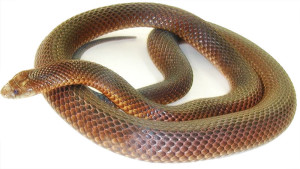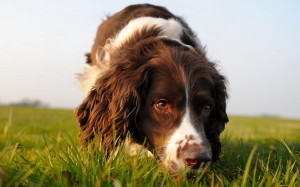Snake Sightings in Suburban Adelaide
02 November 2015
My dog has been bitten by a snake. Will he die?
“It depends on the species of snake. There are many deadly snakes in Australia – below we have listed the top ten deadliest species.”
Top 10 Venomous Australian Snakes
- Eastern Brown Snake
- Western Brown Snake

- Common Tiger Snake
- Inland Taipan
- Eastern Taipan
- King Brown Snake
- Common Copperhead
- Eastern Small-Eyed Snake
- Southern Death Adder
- Common Black Snake

What are the signs of snakebite?
When an animal is bitten by a snake, it is generally bitten on the nose (from sniffing in undergrowth) or in the paw area.
GENERAL SIGNS:
- Drooling
- Trembling
- Excitement
- Vomiting
- Collapse
- Dilated pupils
- Rapid pulse
Symptoms often can occur within 15minutes but sometimes later depending on the age of the snake. Generally speaking the baby snakes are considered far more dangerous as they do not have a control on the reflex venom release whereas adults do. This is not to say that adults are not dangerous.
How is a diagnosis of snakebite envenomization made?
Diagnosis is primarily made on medical history and clinical signs. If the type of snake is unknown, diagnosis and treatment will be directed at the presenting clinical signs.
What first aid treatment should I do on my way to the veterinarian?
“If possible, carry the dog rather than allowing the dog to walk.”
1. Minimise the animal’s movement:
The poison will spread a lot faster throughout the body if there is excessive movement. Keep the animal quiet and calm
2. Ignore the bite wound:
Do not attempt to suck, squeeze or cut the venom out of the wound, this will increase the blood supply to the area and make the condition worse
3. Lower the limb:
If it is the leg, paw or tail that has been bitten, keep the limb below the heart. This will slow the spread of the poison
4. Bandage the whole limb:
Apply a firm bandage over the whole limb to immobilise it and therefore reduce the rate at which the poison can spread.
5. Apply an Ice Pack:
Apply an ice pack to the area and firmly bandage it in place. This will slow the spread of the poison.
6. See a Veterinary Surgeon immediately:
When treated properly, with Anti-venom and other medications, further complications can be prevented and lives can be saved. You have up to 2 hours for effective anti—venom application so it is important not to panic, jus t get to a vet as soon as you safely can. Be prepared the trip to the vet may be unpleasant, if you have help that will take a lot of stress off you and will hopefully prevent you pet from bouncing around in the car, remember POINT 1.
t get to a vet as soon as you safely can. Be prepared the trip to the vet may be unpleasant, if you have help that will take a lot of stress off you and will hopefully prevent you pet from bouncing around in the car, remember POINT 1.
What is the treatment for snakebite envenomization?
Venomous snakebites are medical emergencies requiring immediate attention. Before treatment is begun, it must be determined whether the snake is venomous and whether envenomization occurred. Fortunately, a venomous snake may bite and not inject venom (“dry bites”). When no envenomization occurs, or if the bite is inflicted by a non-venomous snake, the bite should be treated as a puncture wound. Non-venomous snakebites are generally treated with wound cleaning, antibiotics, anti-histamines and anti-inflammatory medications as indicated.
“The correct treatment of venomous snakebites depends on the type of snakebite.”
The correct treatment of venomous snakebites depends on the type of snakebite. Treatment to counter shock, low blood pressure, infection and respiratory distress is indicated in most cases of venomous snakebites.
What is the prognosis for a dog bitten by a snake?
The prognosis depends several factors, including: the size and species of the snake; the amount of venom injected; the number of bites; the location and depth of the bite (bites to the head and body tend to be more severe than bites to the legs or paws); the age, size, and health of the dog; the time elapsed before treatment; and the dog’s individual susceptibility to the venom. The location of the bite is important. Swelling from bites around the muzzle and face can lead to breathing difficulties due to obstruction of the airway.
“The location of the bite is important.”


